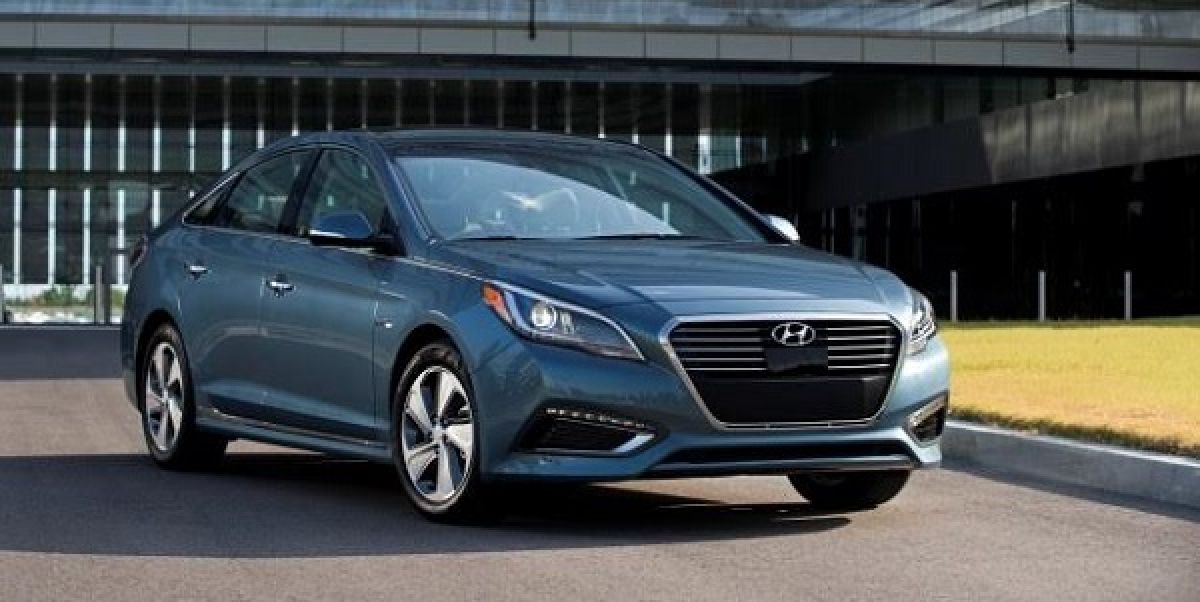What do these vehicles deliver to the consumer?
Let’s take the hybrid first. Hybrids have been around since Toyota took the plunge with the Prius way back in the dark ages - 1997. The bloom may be off the hybrid rose, however, as indicated by Toyota’s decision to drop the Prius nameplate. Half of the problem is that automakers have been able to respond with pure ICE cars that have mileage darn near equal to those offered by hybrids. A prime example is the Honda Civic sedan. For 2016 they offered it with highway mileage of 42 mpg. The Hyundai Sonata hybrid delivers 38 city, 45 mpg highway and delivers this for a base price of $26,435. The base price of the Civic is $18,640. I’m not sure what value this delivers other than being able to use the HOV lanes in California.
Full Slate of Amenities
Do you want heated seats? You got ‘em. 8 way power driver seat? You got it. Rear view camera, electric power steering, overhead console, turn by turn navigation, hands free calling, trip computer, heated side mirrors, automatic headlight control, bluetooth phone integration, LCD display, climate control instead of manual AC, satellite radio, and USB connection are just some of the standard features and where you go from there is up to you.
54.5 Miles Per Gallon
You all know the mandate to reach 54.5 miles per gallon fleet average by 2025. Such a radical change takes a lot of engineering work. It is starting to look like tinkering with the old reliable ICE is getting close to being played out. The problem is that people are buying SUV’s now because of the low price of gasoline. The demand for high mileage cars is slowing down as a result. So how do you get to 54.5? As the fleet shifts ever more clearly to big, heavy SUV’s and trucks, but the legal mandate remains the same, automakers everywhere are trying to make the necessary accommodations to please both of their masters; the government and the public.
How are they doing this? Well, for one thing they are petitioning the government(s), complaining that the goal is too demanding, and pleading for some reductions here and there using the typical legislative sleight of hand. I’ve been around for a few years and I remember vividly jumping for joy when my compact, Plymouth Duster hit 18 miles per gallon on an all highway drive from New Jersey to Montreal. That would be a 42 mpg trip in a Honda Civic today. I also remember the wailing and moaning and gnashing of teeth when the first mandatory fleet average MPG was proposed. At the time the average fuel economy was in the range of 13.5 mpg. The rule mandated that they reach 27.5 mpg by 1983. Ford complained that the “result [would be] a fleet of pinto sized vehicles.” It didn’t happen. To quote Samuel Johnson in the short form, “When a man knows he is to be hanged...it concentrates his mind wonderfully.” Under threat of death by foreign competition willing to comply, they did what they said they couldn’t do.
I think what we see here is a form of concentration of the mind. My only reservation here is that the necessary further efficiencies just may not be available to tinkering with the ICE configuration.
The Hyundai Ioniq full EV sells in England for £19,995 which would be $26,377 here, but it only does 110 miles on a charge. Fine for tooling around London, not so good for rancher in Wyoming. The plummeting sales of the Leaf and the huge sign up for the Tesla Model 3 makes this a questionable strategic move. The GM Bolt was recently announced to have a 238 mile range on a full charge.
200 miles is the new magic minimum. They will have to do better.






Comments
Good points here, but one
Permalink
Good points here, but one thing to keep in mind is that in the U.S. market the top two selling "affordable" EVs both have gasoline motors on board. I haven't run the numbers this calendar year, but the last time I checked, PHEVs and EREVs were outselling BEVs (battery electric vehicles). The one advantage I see with plug-in EVs is that they offer the best cost per mile for energy. Here in Mass it is cheaper to run a green car on gasoline than it is to run one on electricity. True in Michigan as well, and many other places in the U.S. That's not a theory, we've proven it.